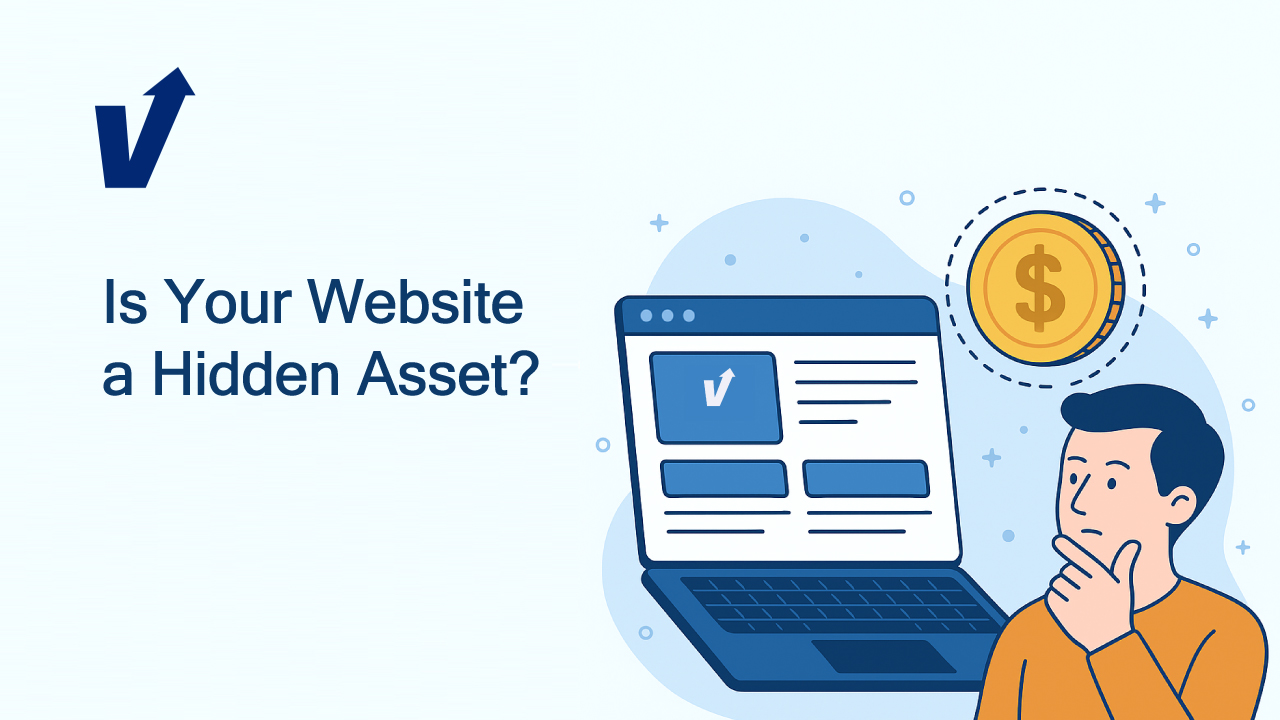
Most business owners don’t realize their website is more than a digital brochure. it’s a revenue engine and a real equity asset. In this guide, we break down how to measure the true value of your digital presence and why it matters for growth, M&A, and long-term ROI.


Imagine this: you’re getting ready to sell your business. You’ve built a strong brand, loyal customers, healthy revenue. Then the buyer does due diligence and tells you something surprising: “Your website and digital footprint are part of what makes this business attractive.”
For many business owners, that’s a wake-up call.
After working with dozens of manufacturers and B2Bcompanies, I’ve seen a recurring blind spot: most business leaders don’t realize their digital presence is a business asset. They see it as a marketing cost, not an equity builder. They’re focused on products, sales, or operations. The website? It’s just “there.”
But in today’s market, your digital presence , your website, traffic, SEO, and lead funnel —holds real, measurable enterprise value. It’s a revenue engine, a growth multiplier, and in many cases, a deal sweetener during M&A or investor discussions.
If you’re behind in your digital strategy, thinking about selling, or just not sure what your website is worth… this guide is for you.
1. Quantify Digital Revenue Contribution
Ask: How much of your revenue is influenced by your web site or digital channels?
Why it matters:
Ties digital directly to revenue and therefore to your company’s valuation.
2. Evaluate Brand Visibility & SEO Performance
Check your online visibility compared to competitors:
Why it matters:
Organic visibility reduces customer acquisition costs and builds long-term equity.
3. Assess Cost Efficiency of Digital Channels
Compare digital acquisition to traditional methods:
Why it matters:
Efficient digital acquisition improves margins and increases your valuation multiple.
4. Track Owned Media Value Over Time
Your website, email list, CRM, and content are all owned assets. Measure:
Why it matters:
These are appreciating digital assets that support recurring revenue.
5. Measure Operational Efficiency Gains
Digital systems can save time and reduce overhead:
Why it matters:
Operational efficiency boosts EBITDA and adds enterprise value.
6. Benchmark Digital Maturity
Use a framework like eRevenu’s Digital Maturity Index to assess:
Why it matters:
Higher maturity means higher multiples in M&A and greater resilience in growth.
(What Buyers, Investors, and Customers Look For)
Monetization Clarity
Know what’s driving real revenue and where to optimize spend.
Strategic Budgeting
Invest in what’s working. Cut what’s not. Plan based on ROI, not guesswork.
Business Valuation
Digital performance boosts your company’s worth—even if you’re not eCommerce-first.
Competitive Advantage
Benchmark your digital edge and highlight it in sales, investor, or partnership conversations.
Risk Mitigation
Reduce reliance on a single channel, identify weak points early, and adapt faster.
Operational Efficiency
Automate the manual. Scale without extra headcount. Move faster across teams.
Your website is no longer just a marketing tool. It’s a growth asset. A revenue generator. A line item in your valuation.
Whether you're preparing for acquisition, exploring new markets, or just trying to grow faster, measuring the value of your web presence is the first step.
Want to Know What Your Digital Presence Is Really Worth?
At eRevenu, we help manufacturers and B2B businesses build digital ecosystems that drive measurable ROI and long-term value. We don't guess. We build, track, and scale with precision.